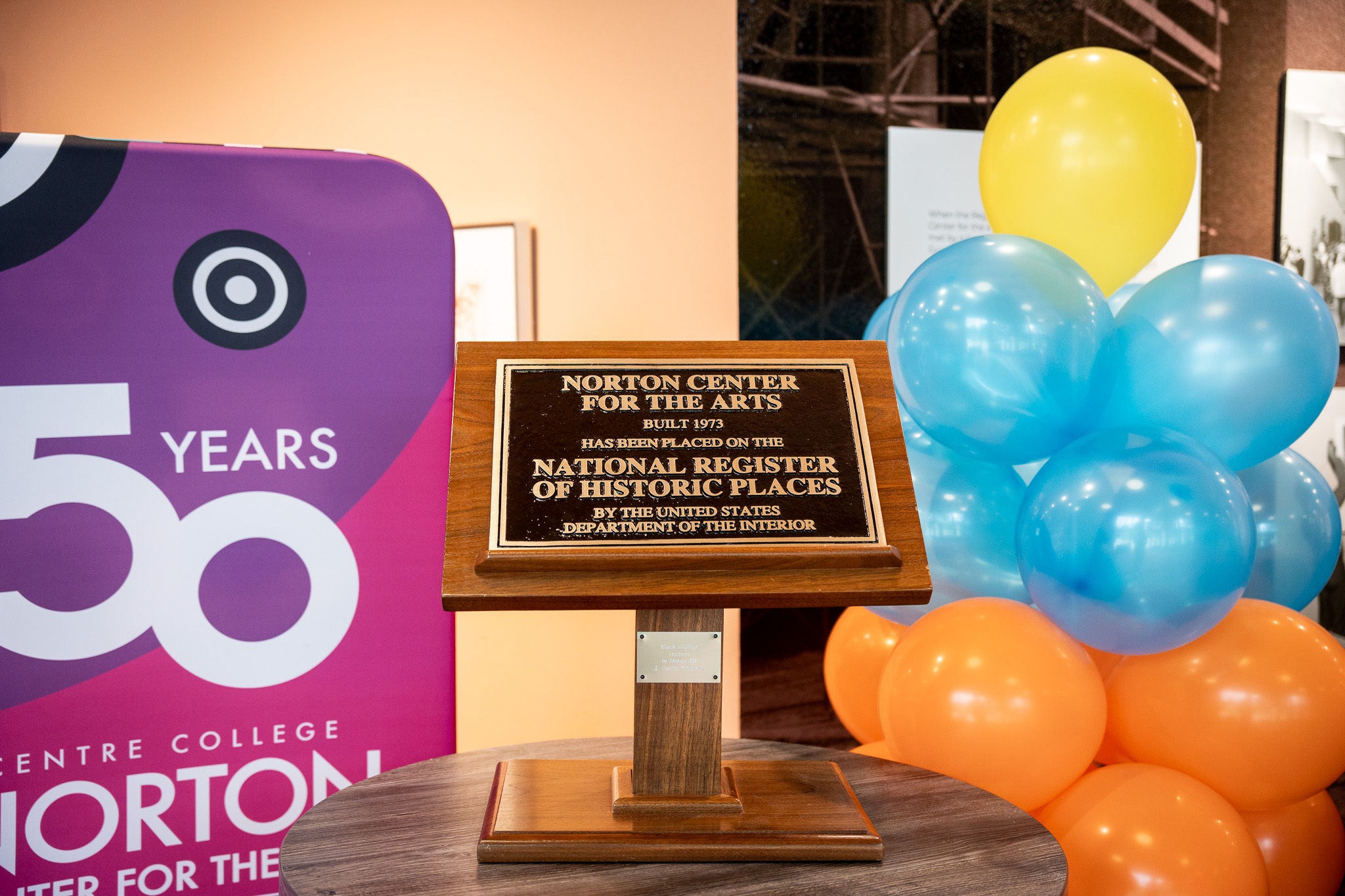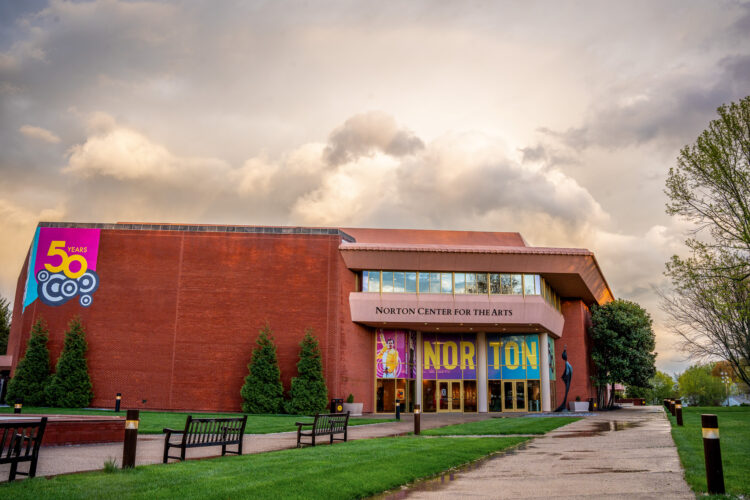Norton Center recognized on National Register of Historic Places
The United States Department of Interior has officially recognized Centre College’s Norton Center for the Arts on the National Registry of Historic Places (NRHP) as a significant performance space of distinctive design within the national context of American architectural history. This designation highlights the architectural and cultural significance of the Norton Center, which has been a valuable part of the landscape of Centre College and Danville since 1973.
The National Register of Historic Places is the official list of the Nation’s historic places worthy of preservation. The National Register recognizes districts, sites, buildings, structures and objects significant in American history, architecture, archaeology, engineering and culture. To be considered for listing in the National Register, a property must generally be at least 50 years old, and must also be significant when evaluated in relationship to major historical events or trends in the history of their community, the state, or the nation. A property must also possess historic integrity – the ability to convey its significance.
Including the Norton Center on the National Register is a testament to its enduring legacy and contribution to the cultural landscape of Centre College and the Danville community. Designed specifically for Centre College by William Wesley Peters, protégé of Frank Lloyd Wright, the Norton Center embodies architectural excellence and innovation. Inspired by Wright’s principles of organic architecture, its design has provided a world-class venue for performing and visual arts that has served as a catalyst for learning, artistic expression and community engagement.
“This designation is an honor, as it recognizes places that enrich lives and make a community unique,” said Norton Center Executive Director Steve Hoffman. “We are proud of our building’s cultural and historical significance and how it continues to transform lives. We hope this recognition helps reinforce an appreciation in current and future generations of Central Kentuckians for this special place.”
The Norton Center stands as a prime example of modernist organic architecture. Peters collaborated with Wright for more than a quarter-century on his most famous projects, and as a result, Wright-inspired architectural elements are evident throughout the Norton Center – from the repeated hexagonal shapes, playful use of natural light and bold colors to the intimate performance spaces and acoustics.
To best maintain the integrity of the architectural vision, original building elements have been restored and maintained whenever possible. Throughout the Norton Center, original elements such as door handles, Tivoli chandeliers, carpet color, hexagonal light recesses and other decorative details remain intact. Since opening in 1973, Taliesin-approved paint colors have also been used continually inside and outside the Norton Center.
The Norton Center’s location, combined with its distinct aesthetic and versatile building qualities, has made it a premier site for performing and visual arts, placing world-class arts experiences within reach of central Kentuckians.
The construction of the Norton Center transformed Kentucky’s cultural scene. While the community had performing arts events before the Center’s establishment, the new state-of-the-art building with its versatile, modern design enabled Danville to attract a consistent stream of nationally and internationally renowned artists. The Norton Center’s influence also reached beyond Danville, impacting nearby cities like Lexington and Louisville. Neither city boasted venues capable of hosting the diverse and exceptional productions the Norton Center, and it would be years after the Center’s construction before they followed suit with their own performing arts venues. The construction of the Norton Center thus marked a pivotal moment in the region’s cultural history, setting a new standard for Kentucky’s performing arts scene.
Authorized by the National Historic Preservation Act of 1966, the National Park Service’s National Register of Historic Places is part of a national program to coordinate and support public and private efforts to identify, evaluate, and protect America’s historic and archeological resources. To be considered for listing in the National Register, a property must generally be at least 50 years old, and must also be significant when evaluated in relationship to major historical events or trends in the history of their community, the state, or the nation. A property must also possess historic integrity – the ability to convey its significance.




